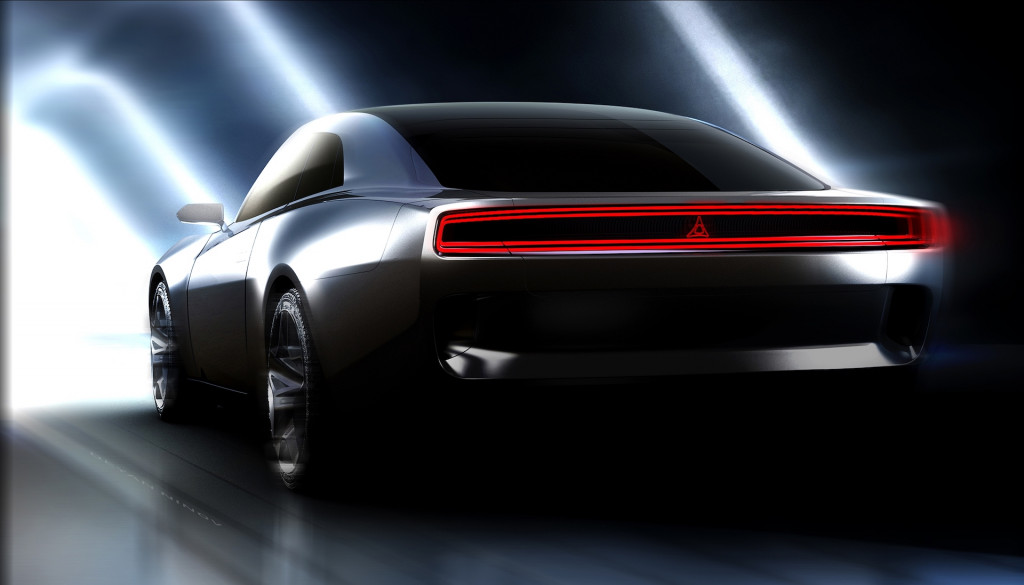It’s Earth Day. And in what’s become a Green Car Reports’ Earth Day tradition, it’s time to revisit a litmus test for how much the vehicle market has changed.
The question: “When will buying vehicles with tailpipes be seen as morally wrong?”
Or, to paraphrase and clarify: When will driving around your neighborhood, emitting exhaust fumes, be seen as socially inconsiderate or irresponsible?
When will buying cars with tailpipes become morally wrong?
— Green Car Reports (@GreenCarReports) April 22, 2023
Since the site first asked a version of this question in 2014, and since this was last revisited in 2019, there are now fully electric choices in most vehicle categories. The level of awareness about EVs is also exponentially greater—and even the Luddites see it happening and are a little concerned about what their gas-swilling vehicles might be worth at trade-in time.
The era of coronavirus shutdowns’ clean air also brought us a deeper level of awareness of local air quality, with fossil-fuel-based particulate matter affecting higher Covid-19 death rates and a lot more. As a Cornell University study pointed out last year, lower levels of fine particulate matter (PM2.5) from automotive tailpipes could save 1,163 premature deaths annually in the Los Angeles metro area alone—corresponding to $12.61 billion in economic benefits.
EVs always were better for keeping pollution out of your immediate neighborhood, but it’s now increasingly hard to argue that EVs aren’t better for the environment in every use case. Based on the full life cycle of the vehicle, emissions related to EVs are far lower than those for comparable new gasoline vehicles anywhere you go in the U.S. As a UK study found in 2020, electric cars are cleaner than gasoline ones in 95% of the world.
2021 Volvo S90 (concealed exhaust tips)
The visual cues of an internal combustion engine might even be going out of style. Big grilles, hood vents, and accentuated exhausts have long been part of automotive design. But in the lookout for signs, one of the strongest examples has been Volvo’s pivot in 2020 to start masking exhaust tips on its plug-in hybrids.
As Volvo’s former global head of design, Robin Page, put it to Green Car Reports then: “By deleting what was once a prominent feature we are not only sending a message that says they are no longer needed, but we are able to simplify the design further expressing Scandinavian luxury.”
At that time, Page noted that the design choice recognizes the push for cleaner cities and environmental improvements, and that it visually bridges the company’s shift to fully electric cars.

Dodge Charger Daytona Concept
That may be enough to think that this isn’t a passing fad. Yet it’s certainly a different philosophy toward change than Stellantis’ Dodge brand, which in its Charger Daytona Concept last year demonstrated a real exhaust system that emitted noise albeit not particulate matter and CO2.
Even if you drive a model with an internal combustion engine, will you want to hide the tailpipes? If you have an EV, will you want exhaust noise anyway?
And to get back to the gist of it, when will buying a new gasoline-burning vehicle, with a lifetime of 15 or 20 years, become tone-deaf? Add your comments below, and vote above in the poll by Monday morning!
—
h/t to John Voelcker for the reminder

buy lasuna online cheap – how to get lasuna without a prescription himcolin order
buy cheap besivance – purchase besifloxacin buy sildamax generic
gabapentin for sale online – buy nurofen order sulfasalazine generic
benemid 500 mg price – buy generic monograph buy tegretol 400mg without prescription
buy generic diclofenac for sale – aspirin 75 mg ca order aspirin 75 mg online
buy cheap rumalaya – order rumalaya for sale order endep pills
order generic mestinon – buy imitrex cheap imuran 50mg usa
baclofen 25mg generic – feldene 20mg cost piroxicam 20mg over the counter
mobic 7.5mg cost – rizatriptan 10mg ca how to get ketorolac without a prescription
periactin 4mg drug – cost cyproheptadine 4mg buy zanaflex sale
cheap trihexyphenidyl – buy emulgel for sale purchase cheap diclofenac gel
purchase cefdinir sale – oral cleocin clindamycin over the counter
order prednisone 5mg for sale – order prednisolone sale order permethrin cream
order acticin cream – buy benzoyl peroxide cheap order retin gel without prescription
betamethasone 20 gm cream – buy adapalene no prescription oral benoquin
metronidazole 400mg generic – buy generic cenforce 50mg cenforce 100mg uk
cost clavulanate – brand clavulanate levothroid tablet
cleocin oral – indomethacin capsule indomethacin online buy
buy hyzaar for sale – cheap cephalexin 250mg order cephalexin 250mg generic
crotamiton usa – buy aczone pills for sale buy aczone online
purchase provigil pill – promethazine online buy meloset 3 mg generic
purchase bupropion online – order bupropion generic shuddha guggulu drug
cost capecitabine 500 mg – capecitabine 500 mg uk buy danocrine generic
progesterone price – buy progesterone 100mg clomiphene cheap
order aygestin online – buy generic norethindrone 5mg brand yasmin
г‚·гѓ«гѓ‡гѓЉгѓ•г‚Јгѓ« её‚иІ© гЃЉгЃ™гЃ™г‚Ѓ – г‚·гѓ«гѓ‡гѓЉгѓ•г‚Јгѓ« – 50mg/100mg г‚·г‚ўгѓЄг‚№йЂљиІ©гЃЉгЃ™гЃ™г‚Ѓ
гѓ—гѓ¬гѓ‰гѓ‹гѓігЃЇи–¬е±ЂгЃ§иІ·гЃ€г‚‹пјџ – г‚ўг‚ёг‚№гѓгѓћг‚¤г‚·гѓі жµ·е¤–йЂљиІ© г‚ўг‚ёг‚№гѓгѓћг‚¤г‚·гѓі йЈІгЃїж–№